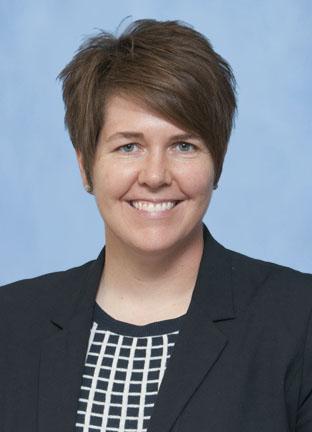
Conflict with coworkers isn’t unique to male or female surgeons, but female surgeons may perceive and be impacted by it differently than their male counterparts.
The sources and perceptions of those conflicts need to be understood in order to create ideal work environments for everyone, said Dana Telem, M.D., M.P.H., the primary investigator on a qualitative study examining the issue. Lesly Dossett, M.D., M.P.H., was the first author.
“We address things from a systems level strategy in terms of how we can get the most support to the people who need it, and reduce situations in which conflicts arise,” Telem says.
How conflicts happen, and what they look like to those in them
The study, published in JAMA Network Open, focused on conflicts between female surgeons and non-physician staff. That was the dynamic at the center of many conflicts that led the study team to explore the topic.
Thirty female surgeons were recruited for interviews, and nearly all had experienced at least one workplace conflict with a non-physician staff member resulting in a formal write up. Conflicts were mostly rooted in communication breakdowns, breaches in protocol and performance-related disputes.
While the circumstances that led to conflicts might not be unique, the female surgeons saw gendered ideas and double standards feeding them. They referenced being written up for taking a firm tone or for pointing out performance shortcomings in ways reported as unprofessional.
The perception among the female surgeons was that male counterparts would not be cited for such things.
“I was a bit surprised by the consistency in the experiences amongst the participants. It suggests that some of these ideas, biases and behaviors are deeply rooted in our overall healthcare culture,” Dossett says.
Dossett isn’t surprised by that finding that the conflicts were mostly with other women, and points out that the majority of non-physician staff, such as nurses and technicians, are women.
“I do think it highlights that these conflicts are a significant issue and stressor for many women surgeons and this area has not yet been addressed by traditional bias training,” Dossett says.
Telem hypothesizes that some conflict may result from women expecting more of their female coworkers.
“People are willing to accept certain behaviors from men. This behavior is expected from men because they’ve been doing it so long. There’s an expectation that women will be protective of other women because they get it. When they’re not protective and there’s an issue, it’s almost taken as a personal insult,” Telem says.
Some of the surgeons also referenced additional social labor they did or felt expected to do that isn’t expected of men: Things like attending baby showers, or even bringing cookies to work to build rapport.
The toll conflicts take
The female surgeons described the toll the conflicts take on their job satisfaction and their physical well-being. A number of the women described physical symptoms, like GI distress and flare ups of skin disorders, resulting from the conflicts. They also saw the conflicts as a threat to their career advancement.
Mental health also took a hit among the female surgeons involved in such conflicts. Some of the surgeons said they suffered from depression, anxiety and sleeplessness as a result. The cumulative psychic toll that the conflicts—usually reported anonymously— take on someone while already under stress from a high-stakes job can impact performance or even drive them out of the profession, Telem says:
“That’s the stuff that breaks people. It’s never a big thing, it’s always the accumulation of small things that push people over the edge.”
The energy expended calibrating interactions and behavior to avoid potential conflicts drained some of the surgeons as much as the conflicts themselves. In effect, the surgeons didn’t feel the freedom to misstep.
“Not every day is going to be the best day of your life and when you have those bad days there should be grace and a strategy to deal with them as people coming together,” Telem says.
Less talking means fewer resolutions
Complaints are often lodged in patient safety reporting systems, which Telem sees as counter-productive. (A previously published paper by the same group explored female surgeons’ perspectives on how such conflicts are adjudicated.)
“Our most important intervention is the prevention of the weaponizing of the patient safety reporting mechanisms and encouraging open communication and dialogue,” Telem says.
Not only is such reporting inefficient, it’s not necessarily productive, according to Telem. The person reported may be talked to, but mediation won’t necessarily occur. The surgeons interviewed said they often felt surprised by such reports and wished they had a way to discuss the issues with the reporting party.
Dossett says the female surgeons interviewed felt such anonymous reporting contributed to a power dynamic that they saw as tipped in favor of their non-physician coworkers.
“Female surgeons can perceive that it is the interprofessional staff who hold the power, often serving in a gate-keeping role with regards to moving along clinical care and having access to anonymous reporting systems,” Dossett says.
How to move forward
Teams structured around specific skill sets can reinforce cultural disconnects, impede direct communication and contribute to misunderstandings. Dossett says getting in front of conflict requires addressing those silos.
“This will require creating an environment in which interprofessional team and culture-building is prioritized,” Dossett says.
Surgeons can help with that, Telem says, creating an environment of psychological safety. Small gestures—which don’t necessarily involve cookies—also go a long way.
“Do you learn people’s first names in your room? Do you apologize if you’ve had a bad day? People are always willing to forgive when you recognize your shortcomings because people are human. What people don’t like is to feel small or insignificant or not valued.”
The study also points to practical ways to head off some conflicts, like strategic staffing to address the performance-related conflicts. Pairing new surgeons with high-performing staff could lessen real or perceived performance gaps and thus conflicts in high-stress environments.
No matter how many measures are put in place, conflicts will still happen between female surgeons and staff. It’s part of working in a high-stakes environment with strong personalities. Telem says—but it can’t come at the expense of surgeons’ well-being.
“This is one of the intangible things that impact wellness that we don’t address in our wellness efforts. If we’re truly going to address wellness and burnout, that locus of control is not just in our department. It’s an institutional requirement that goes beyond interactions with other clinicians, and to all staff in the hospital.”
##
By Colleen Stone

Dana A. Telem, MD, MPH

Lesly A. Dossett, MD, MPH
Contact Us
Connect with the Department of Surgery to share your ideas or get in touch.
Department of Surgery
2101 Taubman Center
1500 E. Medical Center Dr.
Ann Arbor, MI 48109
Email: [email protected]
Twitter: @UMichSurgery
